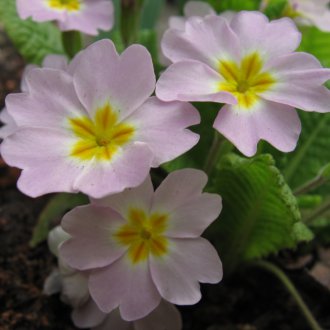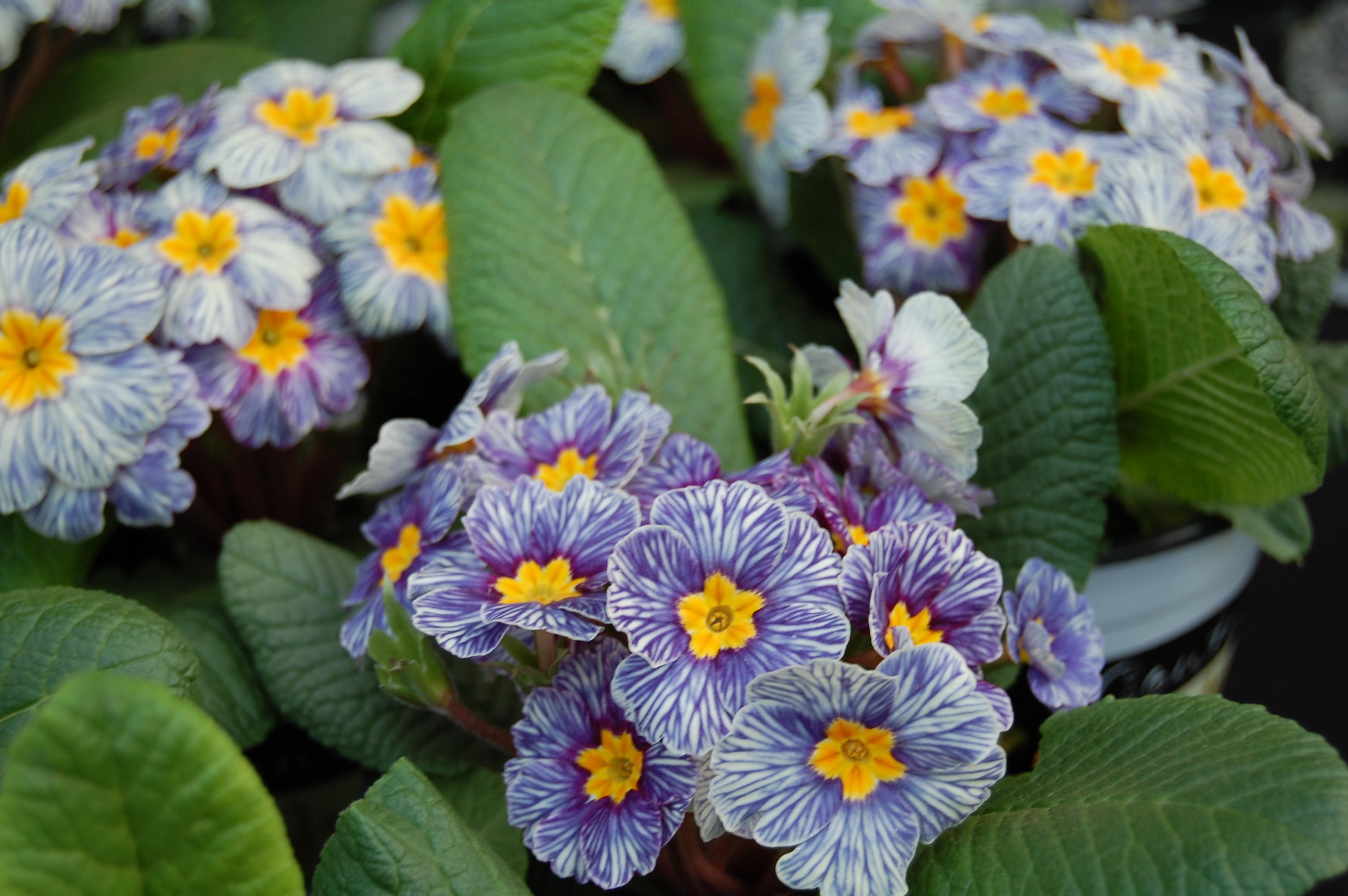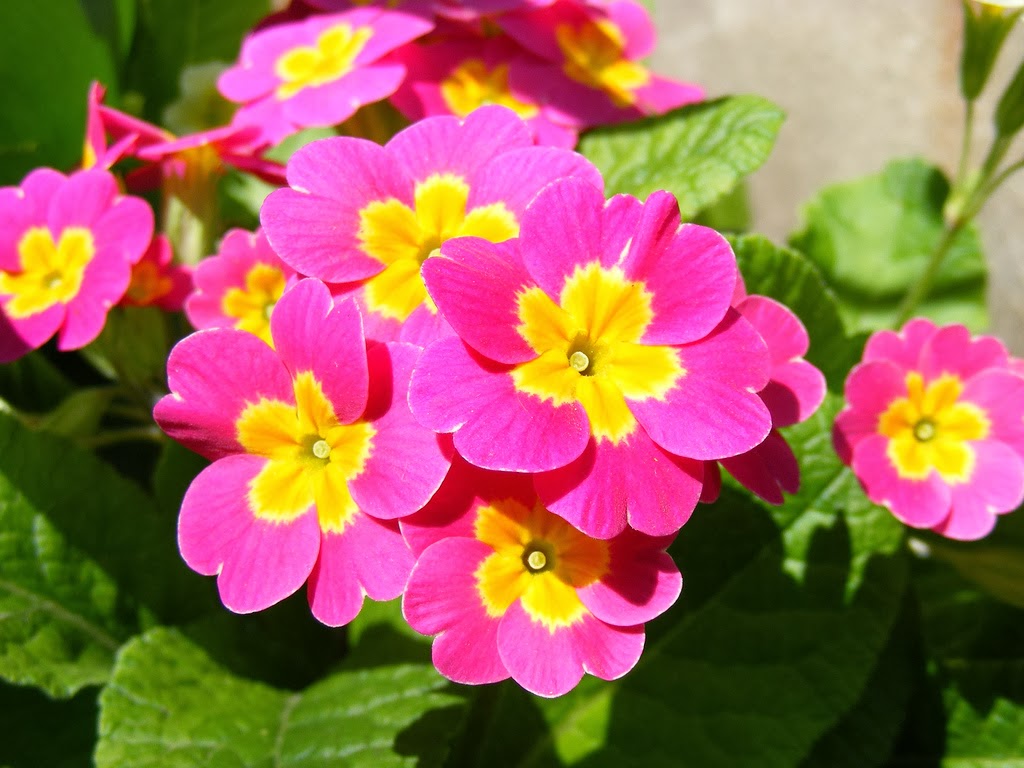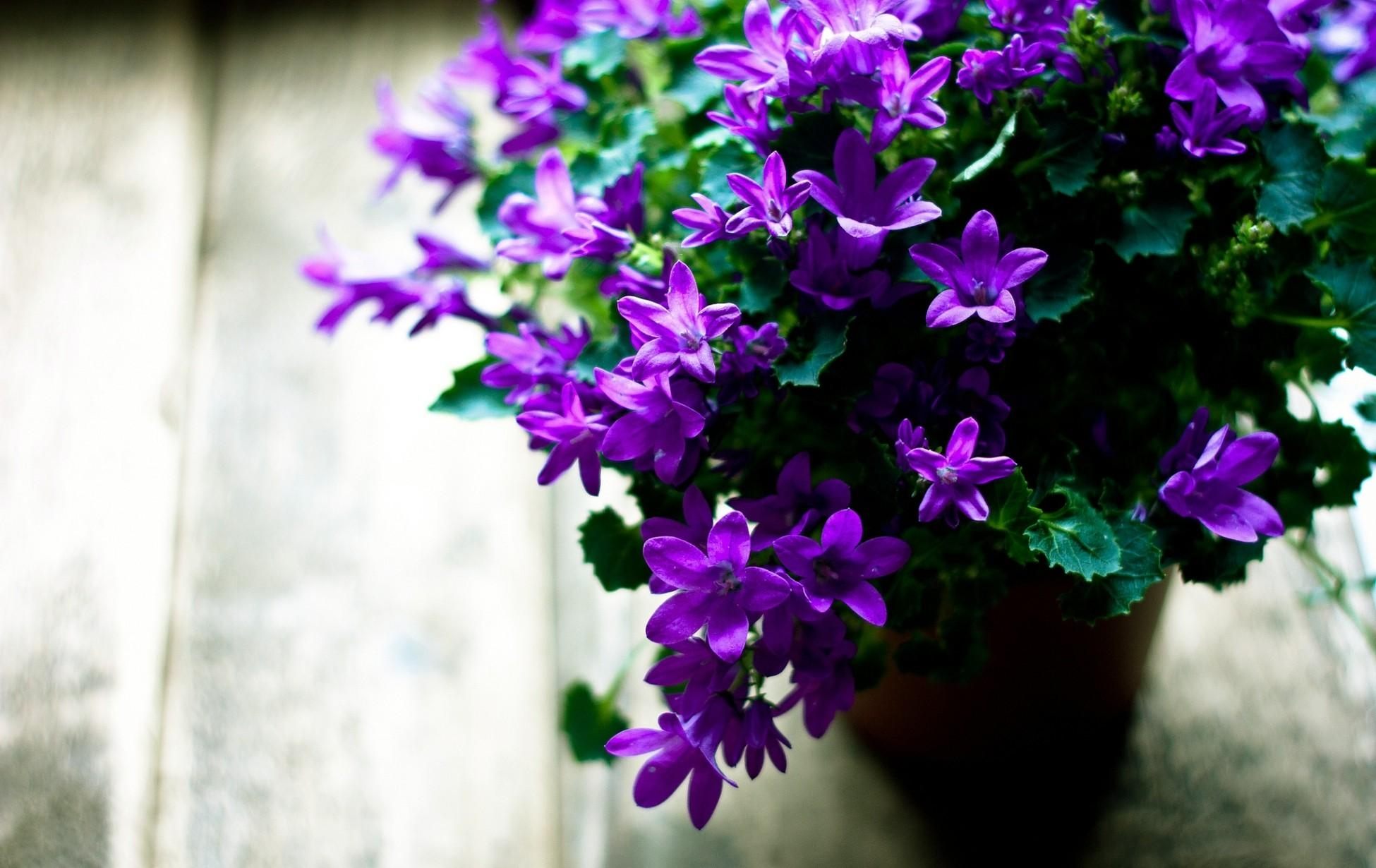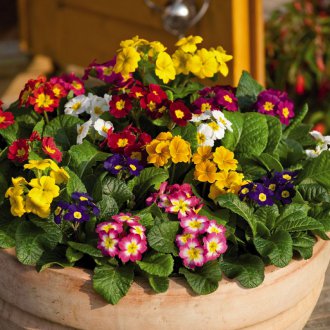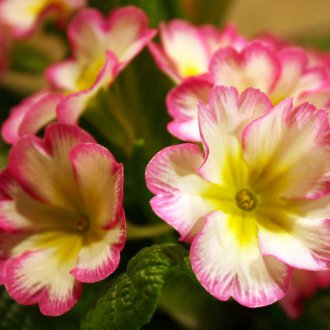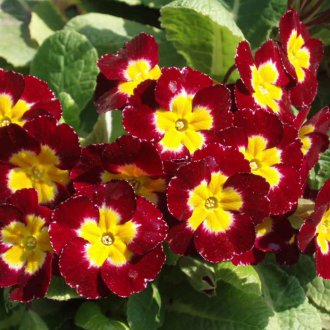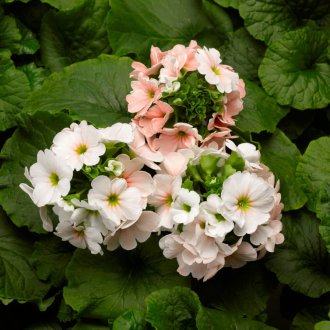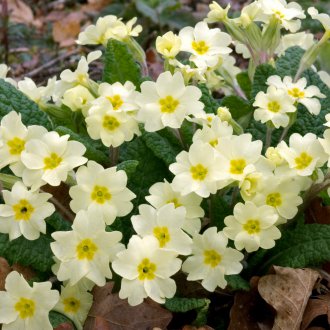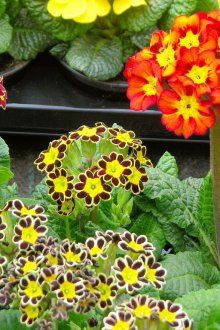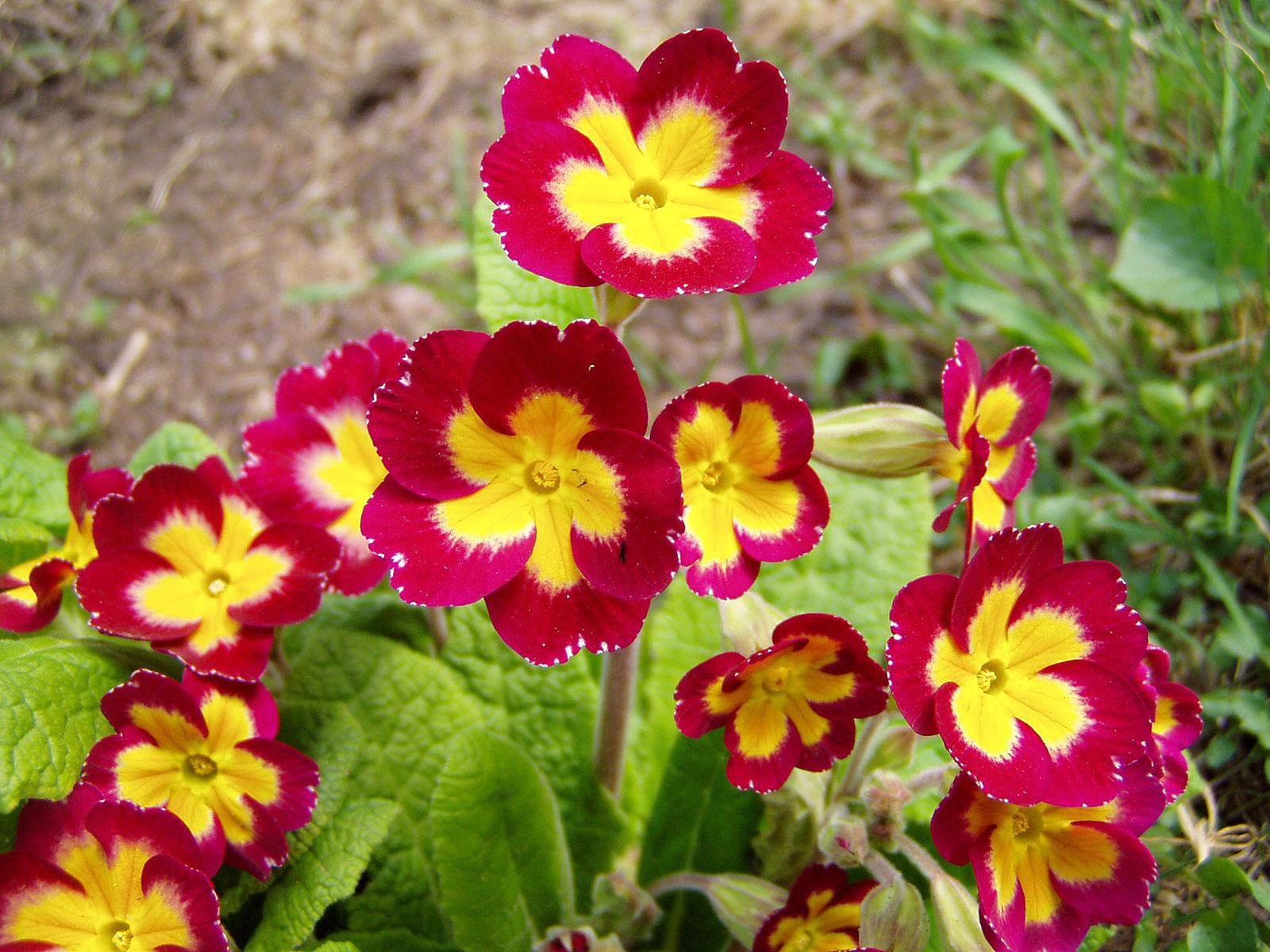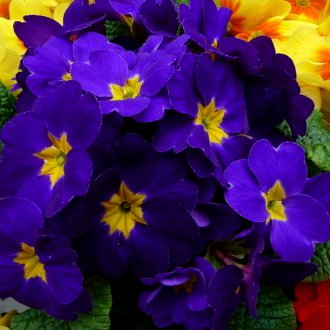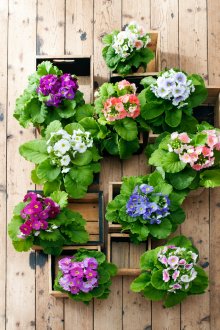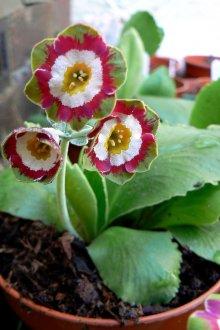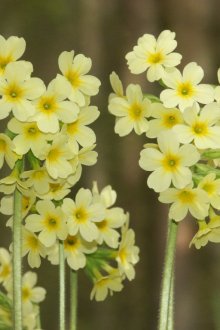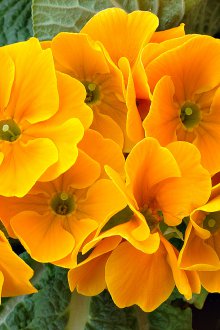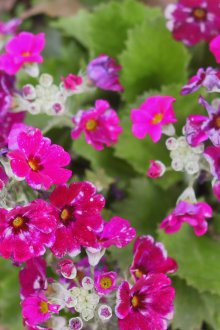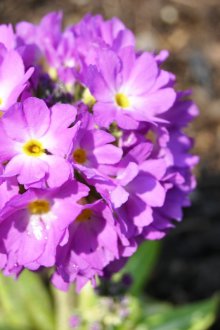Room primrose - a picturesque decoration of window sills (23 photos)
Content
Primrose (from the Latin word primus - the first) belongs to the family of Primrose. About 390 plant species are known, and flower growers all over the world are engaged in its cultivation. The natural habitat is Central Europe.
These herbaceous plants are annuals or perennials. Moreover, it is believed that for indoor breeding an annual flower is more suitable. Its growth is quite modest - up to 25 cm. The foliage is usually saturated green, and has an oval or oblong shape. The surface of the sheet is characterized by a “wrinkled” structure.
It is for a long flowering period that the plant lovers liked the plant. If you adhere to the rules of care, then indoor primrose can bloom twice a year. As a rule, flowers are formed from five petals of white-pink, yellow, burgundy and blue colors.
For the summer period, summer residents plant plants on the site.
Common varieties of primrose
Some hybrid plant species can decorate both window sills and a flower bed in the country, and this explains the popularity of the flower. The main types of plants have several varieties, and therefore for every lover of flora there is a suitable option.
Primrose room soft
This is a perennial plant, which on average is about 30 cm high. All foliage grows from one outlet. The elongated leaf is oval and has a bright green color scheme. Flowering begins in the spring and lasts about three months. Inflorescences are formed by flowers from 10 to 20 pieces. Each flower is mounted on a vertically arranged elongated peduncle. The natural color of the petals is purple. Cultivated plants already have a more diverse range of shades: white, white-pink, red. Common varieties include:
- “The Snow Queen” and “White Pearls” - with flowers of white and pearl shades;
- "Mars" - inflorescences differ in lilac shades;
- “Juliet mixet” - stands out with double flowers with petals painted with muted lilac-pink tones;
- "Enchantment" - has elegant flowers of a rich bright blue color.
Primitive inverse conic
This is a perennial herbaceous species that does not grow above 20 cm. Primrose blooms in spring and winter, but with appropriate and careful care it can almost always please the eye with bright flowers. And this ability makes her very popular. Thanks to short peduncles, inflorescences create the appearance of a hat worn on foliage.
The natural color of the petals is lilac, but thanks to breeding work, varieties with different shades of flowers have appeared. The most commonly grown variety is Twilly Touch Me, whose inflorescences are distinguished by delicate pastel purple, pink or lavender tones. The leaves of individual varieties of this primrose are causing allergies, which is important to consider when serving it.
Primrose stemless
This hybrid plant can be grown without problems both at home on the windowsill and in the garden. Ellipsoidal leaves grow on long cuttings, and the plant itself does not exceed 20 cm.Each flower 2-4 cm in size is attached to a separate tall and thin peduncle. The flowering period of the plant: April-July.
This species has a large variety of varieties, so it will not be difficult to choose a flower to your liking. The most popular varieties:
- "Sphinx Apricot" - differ in unusual coloring: reddish shades smoothly turn into bright orange;
- "Sphinx F1 neon Rose" - the flowers have raspberry red hues;
- “Eclipse Violet with Rim” - flowers of lilac shades have a golden border.
Plant breeding and care rules
To propagate indoor primrose, three methods are used: seeds, dividing the bush, and using cuttings. For planting, a soil mixture is used. The composition includes equal parts of land, peat and river sand. The plant feels best in shallow and wide flowerpots, on the bottom of which the drainage is preliminarily laid.
Growing primrose from seeds
The sowing period of seeds depends on the plant variety. Reverse conic room primrose is sown in spring (in the middle or at the end), and soft-leaved primrose in summer.
It is advisable to prepare the soil for sowing from a mixture of soil and sand, and special holes or furrows should not be made. The seeds are simply gently poured onto the ground and moistened slightly over the entire surface. The container is closed with a transparent material and stored in a bright place. The first shoots appear after about a three-month period. Sprouts with leaves dive into separate cups. Seedlings bloom five to six months after sowing seeds.
Breeding by dividing the bush
You can use this method only after flowering. It is difficult to indicate a specific time of the year, as individual varieties bloom in different ways. At the preparatory stage, the plants are rearranged in a darkened room and watered abundantly until shoots appear. Then the primrose is dug out and divided into parts. In order not to destroy the root system, movements should be soft and careful. Shoots will take root well if you leave the glasses in a bright place. It is advisable to plant strong young plants in large pots. At this time, you should feed and cut off old leaves.
Growing cuttings
In this way, a plant is bred that has a weak root system. At the base of the flower, a leaf petiole with a kidney is found. It is carefully separated and planted in soil to a depth of about one centimeter. Arrange the stalk with a slope. In order for the plants to begin, they provide the appropriate conditions: good lighting, moderately moist soil and a temperature of about 16-18 ° C. As soon as 3-4 new leaves grow on the handle, it can be transplanted to a permanent place in a pot with a diameter of 15-20 cm.
Home Care
It is clear that for full development and lush flowering plants need to be constantly engaged. In indoor conditions, the plant grows for one year, but even during this period it must be properly looked after.
The soil in the pot should always be moist, so you need to immediately determine the convenient irrigation regime. After flowering, the plant does not require abundant watering. A suitable irrigation method is to place the pot in a pan with water. To prevent liquid from getting on the leaves (this can cause them to rot), you can simply periodically pour water into the stand. Before watering, it should settle and acquire room temperature.
The plant needs moist air, otherwise the leaves begin to fade and the flowering period is significantly reduced. In urban conditions, it is difficult to create such conditions, therefore, the optimal solution to the problem is periodic spraying of plants. Moreover, we must try to ensure that water splashes do not fall on the inflorescences. This requirement is easier to fulfill if you irrigate the underside of the leaves.
The optimum air temperature for normal plant growth is 16-20 ° C.When choosing lighting, it is advisable to exclude extreme options - bright sunlight (leaves may burn) or a constant shadow (fraught with short and meager flowering). For comfortable plant growth, flowerpots are best placed on window sills, whose windows face west or east.
As a top dressing, use a weak solution of mineral fertilizers. They begin to nourish the plants from the moment the buds are set. Spend feeding twice a month throughout the flowering period.
Wilted flowers should be cut along with the peduncle. This will contribute to the emergence of new buds and preserve the aesthetic appearance of the plant, as well as dried yellow foliage.
Pest and Disease Control
Improper care can cause plant disease. With dry air and occasional moisture in the soil, aphids and spider mites may appear on the greenery. Visually, this will manifest itself in yellowing and wilting of the leaves. Pest can be neutralized with special chemicals (Karbofos, Aktara).
Fungal diseases are manifested in the form of rotting of the roots and root of the neck. Gray rot leads to the appearance of brown spots on the leaves, covered with a touch of gray. To cure the plant, it is necessary to determine the cause of the onset of disease. Excess moisture can become the basis for the development of fungi. During treatment, it is very important to remove the affected parts and establish proper watering. For processing primrose use Bordeaux liquid, Oksikhom, Kuproskat.
The main feature of room primrose is early flowering. Put it on the windowsill in the apartment, and then the plant will begin to delight others with elegant fresh flowers even before the snow completely melts. Due to the contrast of greenery and flowers, the plant resembles a bouquet, so it is always a pleasure to give and receive such a “live” gift.

